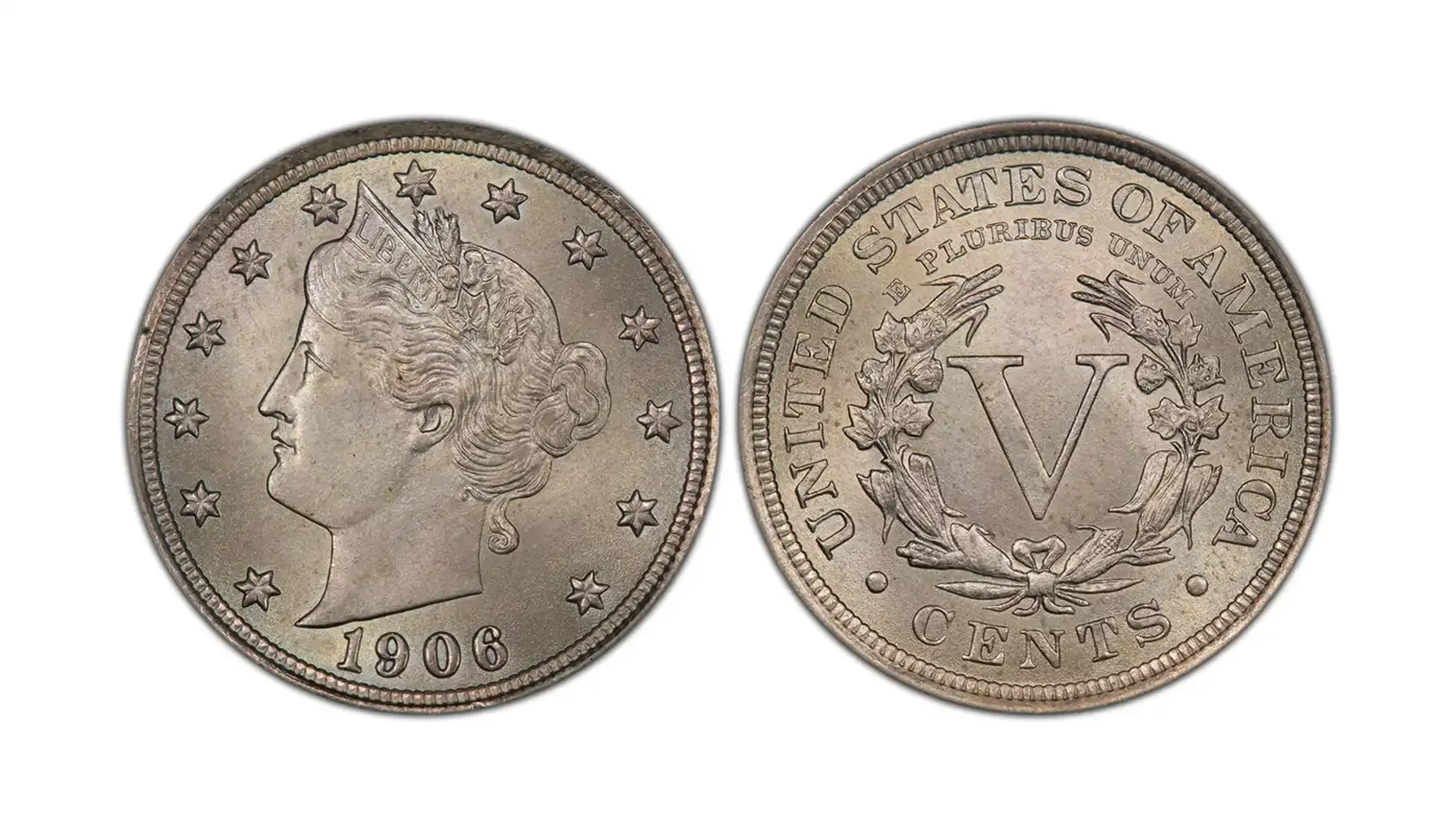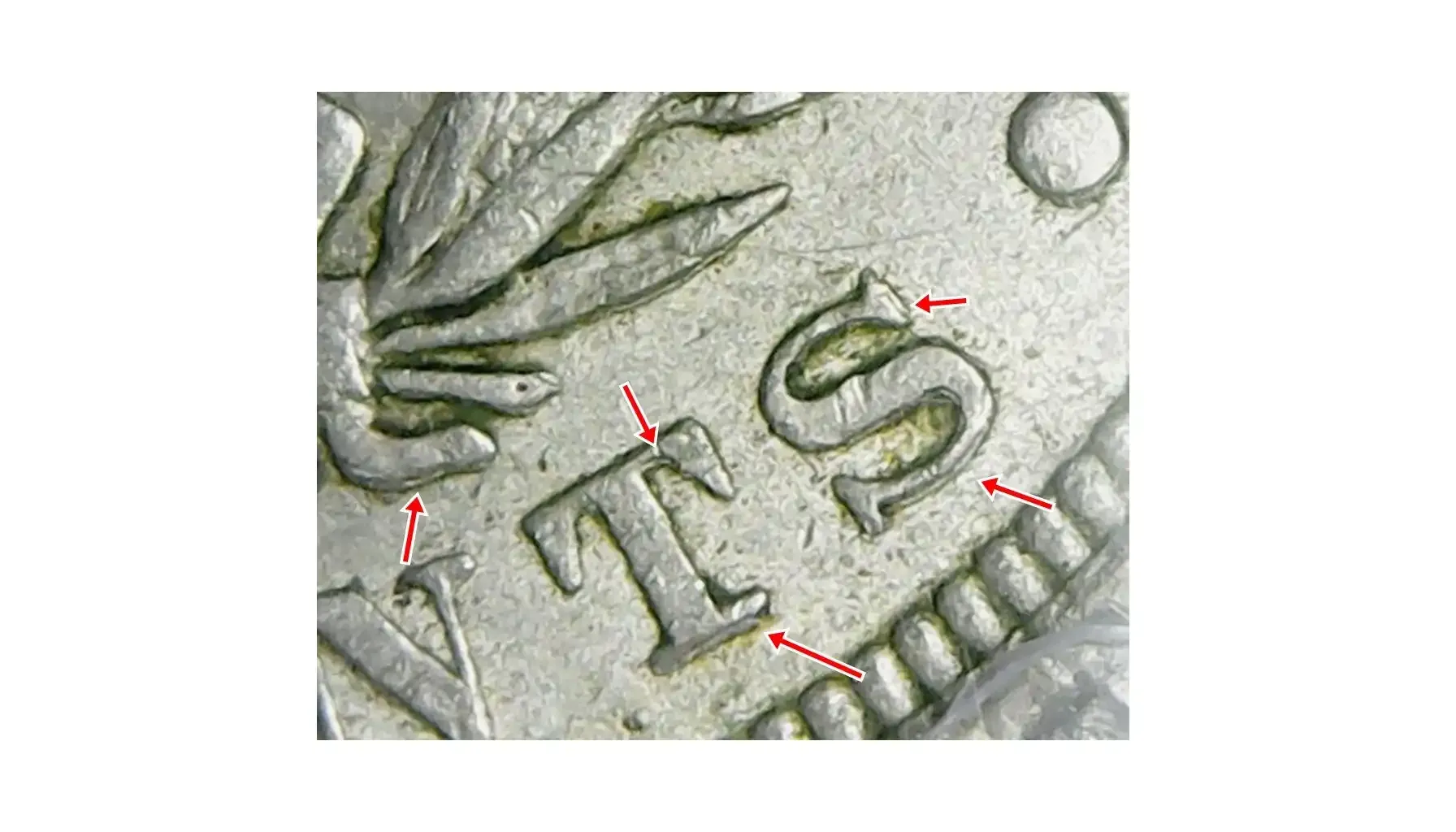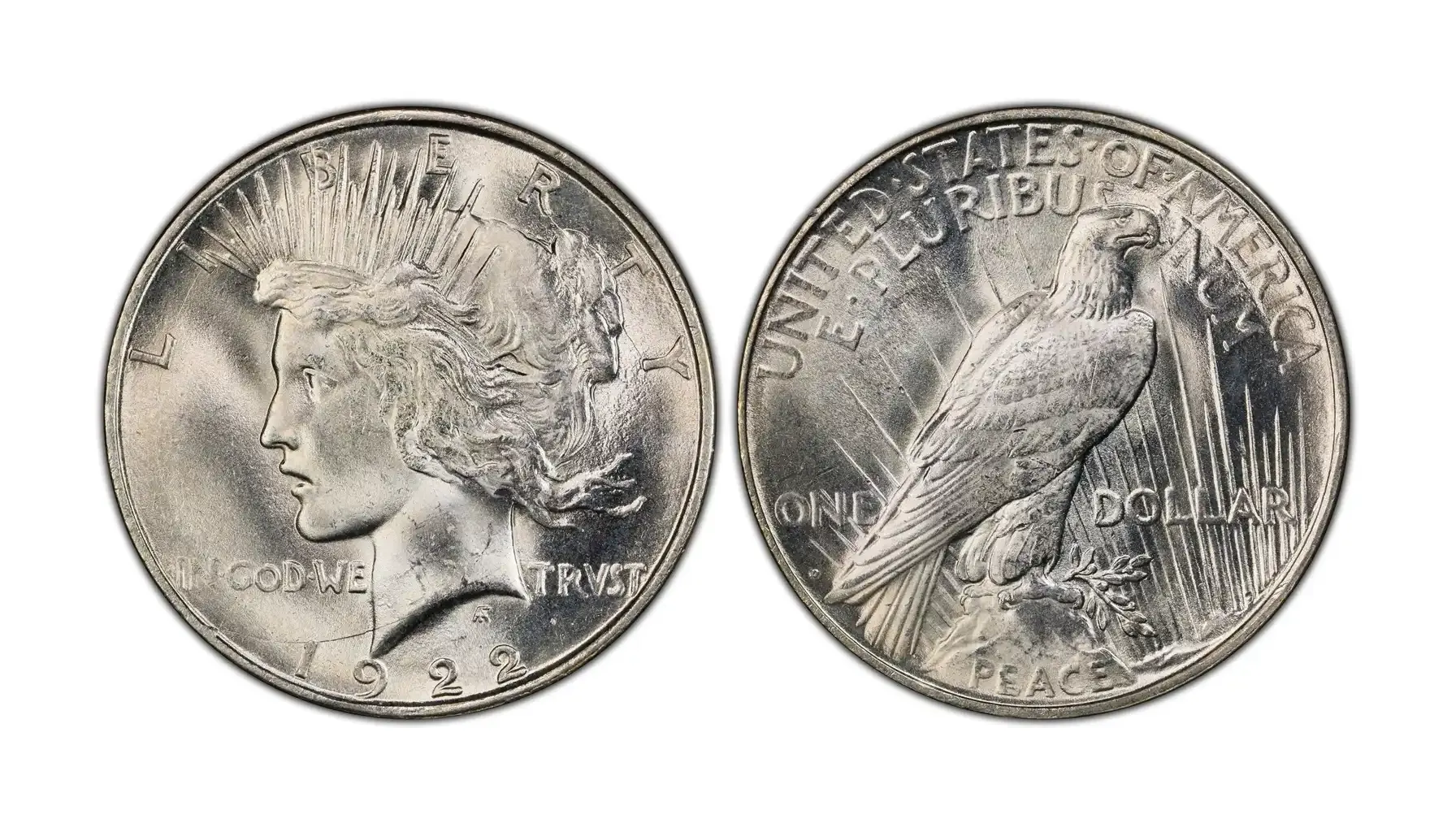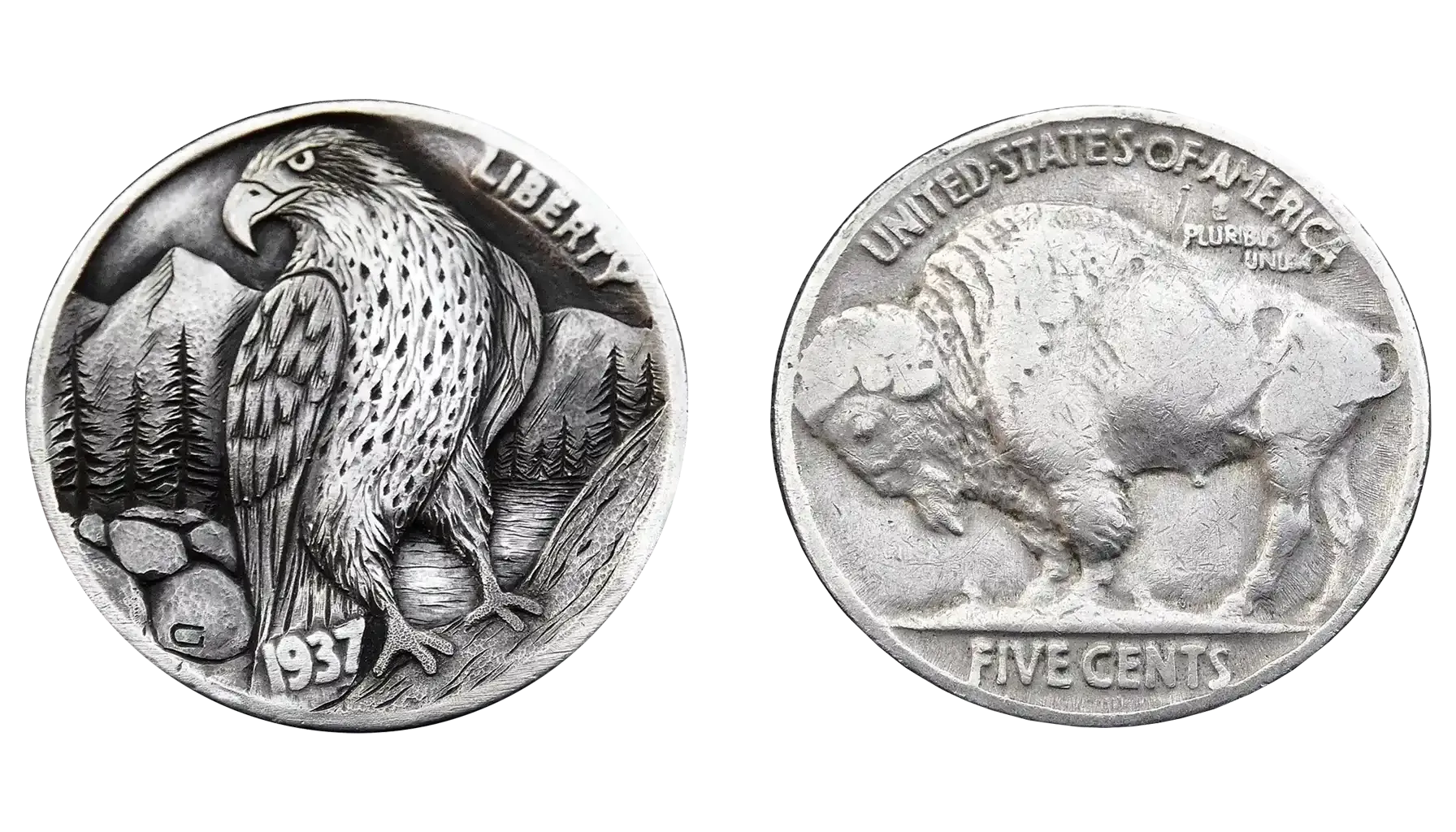Contents:
Found an old coin and want to know its story? Before you get too excited or disappointed, check these key points to understand its value:
Look at the condition: Does the coin look new, with its original shine? Or is it worn down and hard to see? The better the condition (its "grade"), the higher its value. For instance, the 1906 liberty nickel value can range from a few dollars to hundreds, especially for coins in perfect condition
Find the mint mark: Does it have a small letter like "D" (for Denver) or "S" (for San Francisco)? Coins without a mark were usually made in Philadelphia. This small letter can tell you if it's rare.
Look for errors: Look closely at the details. Are there any parts that look shifted, unusual lines, double images, or other small mistakes? Errors can make a coin very valuable! You can find the 1906 V Nickel value today by checking current error guides price.
Check the mintage number: The fewer coins that were made, the more valuable they often are. A coin's worth stems primarily from its scarcity level.
Learn its history: For example, to understand how much a 1906 nickel is worth, collectors research the complete history of the coin and its series. Sometimes, even common coins become valuable because of their historical importance.
Use online resources: For a quick estimate, you can often find a good coin value checker tool on numismatic websites. For more detailed appraisals, consider using services from reputable coin grading companies.
1906 Liberty Head Nickel (Philadelphia - No Mint Mark)

Composition: 75% Copper, 25% Nickel (It's important to note that the 1906 nickel silver content is zero)
Weight: 5.00 grams
Diameter: 21.20 millimeters
Edge: Plain
Mintage: 38,612,000 (Business Strikes), 1,725 (Proof Strikes)
Special Features: The "V" on the back of the 1906 nickel V helps identify it as a Liberty Head Nickel. The absence of a mint mark indicates production at the Philadelphia Mint.
In 1906, the United States was experiencing the tail end of the Gilded Age and the dawn of the Progressive Era. The economy was booming, and the demand for coinage was high. The Liberty Head Nickel, first introduced in 1883, was a workhorse coin that saw extensive circulation across the rapidly growing nation. The production process of 1906 US nickel coins mirrored the regular business activities of an emerging American industrial society. Understanding the 1906 Liberty Head nickel value depends on its condition and any special features.
Market Value
Grade | Description | Price (USD) |
G-4 (Good) | Heavily worn, major features visible, date readable | $1.60 - $2 |
VG-8 (Very Good) | Well-worn, design elements clear but flat | $2 - $2.50 |
F-12 (Fine) | Moderate even wear, some detail remains on high points | $2.30 - $4 |
VF-20 (Very Fine) | Moderate wear on high points, clear details | $3.30 - $30 |
EF-40 (Extremely Fine) | Light wear, most details sharp | $18 - $45 |
AU-58 (About Uncirculated) | Trace of wear on highest points, nearly full luster | $21 - $60 |
MS-60 (Mint State) | Uncirculated, possible noticeable flaws | $70 - $120 |
MS-63 (Mint State) | Uncirculated, average strike and luster, minor flaws | $100 - $300 |
MS-65 (Gem Mint State) | Uncirculated, attractive strike, good luster, few marks | $500 - $900 |
MS-66 (Gem Mint State) | Uncirculated, strong strike, full luster, very few marks | $900 - $2,500 |
MS-66~ (Auction Record) | Exceptional uncirculated, top-tier example | Up to $9,200 |
Listed prices are approximate and may vary depending on the coin's condition, market demand, and other factors.The highest 1906 Liberty Head V Nickel value is for coins that look almost new.
1906-D Liberty Head Nickels and 1906-S Liberty Head Nickels
The 1906 liberty V Nickel is a common coin for its year, but anyway there is a misconception that Liberty Head Nickels were minted at the Denver (D) or San Francisco (S) mints in 1906. Official mint records and extensive numismatic research definitively confirm that the Denver and San Francisco mints did not produce Liberty Head Nickels until 1912, which was the final year of the series.
The reason for this common confusion often stems from the general knowledge that D and S mint marks existed on other denominations (like pennies or dimes) during that era, or from mistaking the rare 1912-D and 1912-S issues.
Indeed, the 1912-D and especially the 1912-S Liberty Head Nickels are highly sought-after, scarce, and exceptionally valuable collector's items, representing the sole years these mints contributed to the series. Their genuine rarity and high value often lead to inadvertent misattribution when collectors encounter older coins.
Another common misconception is to search for the 1906 Buffalo Nickel value. However, official records confirm that Liberty Head Nickels were the only nickel denomination produced in 1906, with Buffalo Nickels beginning production later.
1906 Liberty Head Nickels Doubled Dies
Finding a 1906 V Nickel error can elevate your coin's worth significantly. Doubled die errors occur when a coin die receives multiple impressions from the hub, with a slight misalignment between strikes. This results in a visible doubling of design elements, lettering, or numbers on the struck coin. For the 1906 Liberty Head Nickel, a known and cataloged doubled die reverse (DDR) variety exists, adding a layer of collectibility to this otherwise common date.
Market Value
Grade / Severity | Description | Price (USD) |
Minor Doubling (Circulated) | Slight doubling visible with magnification | $5 - $100 |
Prominent Doubling (Circulated) | Clear doubling visible to naked eye or slight magnification | $100 - $300 |
Minor Doubling (Uncirculated) | Slight doubling on an uncirculated coin | $300 - $600 |
AU-53 (Prominent Doubling) | Clear doubling on a nearly uncirculated coin | $950~ |
Prominent Doubling (Uncirculated) | Clear doubling on an uncirculated coin | $600 - $1,000 |
Significant Doubling (MS) | Very strong, undeniable doubling on an uncirculated coin | Up to $1,400~ |
Listed prices are approximate and may vary depending on the coin's condition, market demand, and other factors
1906 Liberty Head Nickels Off-Center Strikes

Collectors often look for good error examples of the Liberty Head nickel 1906 to add to their collections. An off-center strike occurs when the coin planchet (blank disc) is not perfectly positioned within the coining press before it is struck. This results in a coin where part of the design is missing, leaving a blank area on one side, while the other side shows the design partially truncated.
The 1906 nickel value today, especially value of off-center strike errors is directly related to the degree of the off-center strike and whether key features like the date and mint mark (if applicable) remain visible.
Market Value
Degree Off-Center & Grade | Description | Price (USD) |
Minor (1-10% off, date visible) | Small portion of design missing, date and details clear | $50 - $200 |
Moderate (10-25% off, date visible) | Noticeable portion missing, date and most details clear | $200 - $500 |
10% Off-Center (AU-58) | Example of a specific grade and off-center percentage | $750~ |
Significant (25-50% off, date visible) | Large portion missing, date and some details visible | $500 - $1,000 |
Extreme (50%~ off, date often missing) | Very large portion missing, highly dramatic, date may be off planchet | $1,000 - $1,500~ |
Listed prices are approximate and may vary depending on the coin's condition, market demand, and other factors
1906 Liberty Head Nickels Die Break

If you ask, "what is a 1906 nickel worth," the answer depends on whether it's a regular coin or a special one. Die breaks and cuds are common types of errors that result from the immense pressure and stress exerted on coinage dies during continuous production. A die break occurs when a crack forms in the die, transferring as a raised line on the struck coin.
A cud is a more significant form of die break where a piece of the die completely breaks away, leading to a raised, unengraved blob on the coin's surface, typically at the edge. To know "how much is a 1906 V Nickel worth," you should check for errors and its overall grade.
Market Value
Type of Break & Grade | Description | Price (USD) |
Minor Die Crack (Circulated) | Fine raised line, often subtle | $20 - $50 |
Minor Die Chip (Circulated) | Small raised blob, often at coin's edge, relatively common | $95~ |
Significant Die Crack (Circulated) | Prominent raised line, clearly visible | $50 - $150 |
Minor Die Break (Uncirculated) | Small raised blob, often at coin's edge | $150 - $300 |
Major Die Break (Cud - Circulated) | Large, distinct raised blob, clearly missing die metal | $200 - $500 |
Major Die Break (Cud - Uncirculated) | Large, distinct raised blob, clearly missing die metal, on a high-grade coin | $500 - $1,000 |
Extensive Die Break / Complex Cud (Uncirculated) | Very large or unusually shaped cud, highly desirable and rare | $1,000 - $2,000~ |
Listed prices are approximate and may vary depending on the coin's condition, market demand, and other factors
In general, the value of 1906 nickel coins is mostly decided by their condition, age, and any mistakes from the mint. Understanding its sole minting location in 1906 and being aware of the potential for valuable errors like doubled dies, off-center strikes, and die breaks can significantly enhance your appreciation and pursuit of these historic coins. Always examine your coins carefully, and consider professional grading for any piece believed to be a rare error or in a high-grade condition. Explore the coin thoroughly, so there would be no misidentification like with “1906 Indian Head Nickel” case.



